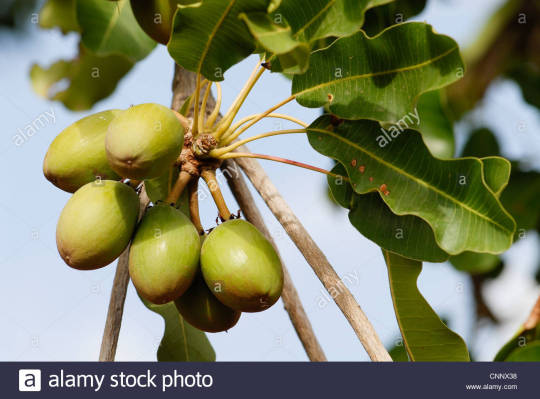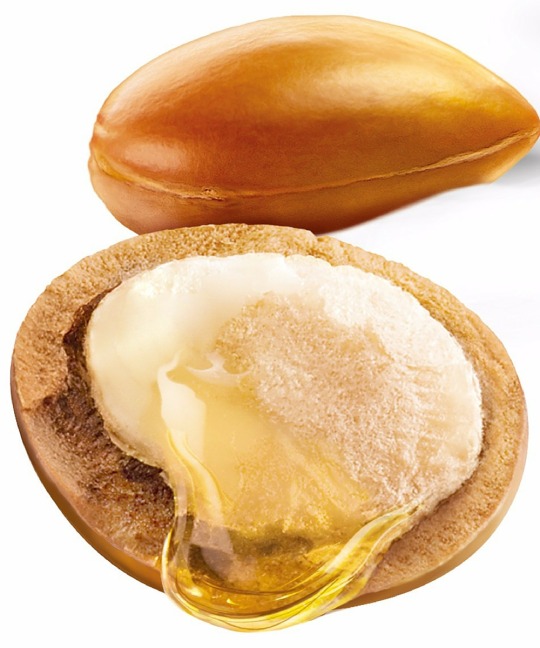Text
Shea Butter: Multifunctional Dream Cream
Intro
With skin being one of our most delicate and important organs it’s of essential importance that we care for it properly. Hydration and nutrition are key factors in maintaining the health of our skin. Extreme temperatures, stress, aging and the use of chemical filled detergents are toxic to our skin. Finding a natural product that provides protection and encourages healing should be a high priority for us all.
Many sources believe shea butter is that product. If you haven’t discovered shea butter yet, stay tuned while I elaborate on this nutrient rich dream cream. As one of the most natural and widely used ingredients in today’s moisturizers, shea butter is gaining popularity and momentum as an effective remedy to many skin and hair ailments. With its long history of use, low price point, creamy texture and nutrient rich make up; no harmful side effects shea butter is an ideal product that’s versatile and accessible.
Shea butter can be used in many different ways as a means of healing or a method of remedial treatment. It’s packed with vitamin A and E which make it a great choice for softening the skin. According to, Kathryn Watson of Healthline, “The rich tree-nut oils in shea butter can soak into your skin, creating a smooth and soft barrier that seals in moisture. This moisturizing effect can last several hours” (Shea Butter for Face). Based on scientific research and experience many sources agree that shea butter has much potential benefit as a soothing skin and hair softening agent. Sources also agree that moisturized skin is critical to maintaining polished, soft and vibrant skin. Yet, other sources indicate it can have different effects on different hair textures.

History
With a long and dynamic history, shea butter has found its way into many of today’s cosmetics as a key ingredient. Shea butter is a creamy solid substance that is extracted from the seeds of the Shea tree which is indigenous to Africa (How to Use Shea Butter). It’s usually off-white or beige in color. Shea butter has been harvested for centuries in Africa. According to Rochaun Meadows-Fernandez and Kristeen Cherney with Healthline.com, Healthline is an American website and provider of health information, “There is evidence that food, skin balms, soaps, shampoos, traditional medicines, cooking, and lamp oils have been made with Shea butter in Africa for thousands of years. Its use has been documented as far back as the 14th century” (Shea Butter for Hair). Likewise, Bryce Tarling of Alive: Canada’s Natural Health & Wellness Magazine agrees, “Shea butter is extracted from the kernels of Shea nuts. Traditionally used as an edible oil and medicine in Africa, where Shea trees are grown, today it’s used as a cocoa butter substitute-and as an ingredient in skin care products” (Winter Skin Care Relief). It’s versatile, effective and widely used in different capacities. This is an indication that Shea butter is tried and true.

Nutrients & Skin
Packed with powerful nutrients and vitamins, shea butter has softening and healing properties that offer nourishing benefits to the skin. Tarling asserts, “shea butter contains numerous bioactive ingredients such as vitamins A and E, essential fatty acids, and other phytonutrients essential to health. Shea butter contains compounds such as triterpene acetates and cinnamates, which a 2010 animal study showed to have significant anti-inflammatory and anti-tumor benefits for skin” (Winter Skin Care Relief). For example, “Triterpenes have been found in many plant species...they may induce cell migration, proliferation, and collagen disposition. Triterpenes also enhance the tissue repair by reducing the length of time for wound closure…” (Anti-Inflammatory Skin Barrier). As Lin, Zhong, and Santiago of the International Journal of Molecular Science report. In the same way, another source agrees, “shea butter is typically used for its moisturizing effects. These benefits are tied to shea’s fatty acid content, including linoleic, oleic, stearic, and palmitic acids. When you apply the shea topically, these oils are rapidly absorbed into your skin. They act as a “refatting” agent, restoring lipids and rapidly creating moisture…shea butter has significant levels of vitamins A and E, which means it, promotes strong antioxidant activity ” (22 Reasons to Use Shea). As Kathryn Watson and Cherney of Healthline explains.
Watson and Cherney go on to state, “shea butter is also antibacterial, antifungal, boosts collagen production and may help sooth conditions like eczema, dermatitis and psoriasis. The high levels of linoleic and oleic acid in shea butter balance each other out which makes it easy for your skin to fully absorb it and won’t make your skin look oily after application” (22 Reasons to Use Shea). Shea butter has the potential to reduce fine lines and slow the process of aging. According to PRNewswire, “The secret to shea butter's potency lies in its ability to stimulate collagen production. Collagen, which is the skin's primary structural protein, provides elasticity and gives skin a vibrant, youthful appearance” (Cleopatra’s Choice Releases). Because of shea butters bio-chemical composition it can be used in a variety of ways including as carrier oil that blends well with essential oils. Essential oils are highly concentrated oils that are extracted from roots, seeds and plants; they contain powerful nutrients as well. In addition, shea butter offers some of the same benefits to the hair.
Hair
Adding shea butter to a person’s hair moisturizing routine would be very beneficial. Everyone’s hair structure is the same, regardless if the texture is fine, coarse, strait or curly. Nearly, every hair strand consists of three layers, the cuticle or outside layer that protects the inside cortex and medulla layer from damage. Because shea butter contains tiny fat/oil molecules that penetrate the hairs cuticle layer this oil can be a protectant that stops dehydration and helps to prevent breakage by making the hair shaft more pliable. According to Tarling,”Hair often gets damaged from dry winter air and sun, shea butter’s light non-greasy texture and exceptional moisturizing properties make it an ideal leave-in conditioner” (Winter Skin Care Relief). Our skin and hair can easily absorb the vitamins and nutrients that shea butter is overflowing with.

Side Effects/ Allergies
Studies show, shea butter has nearly no side effects or allergic reactions. According to Watson, “shea butter is an incredibly low-risk topical ingredient. Allergic reactions to shea butter are rare. Even people who are allergic to tree nuts, the family that shea nuts belong to, have a low risk of reaction to shea butter on their face. Researchers believe this is because shea nuts contain little of the tree-nut proteins that trigger allergies” (Shea Butter for Face). It works well with any type of skin.
In terms of how it may affect different hair textures, Fernandez and Cherney go on to say, “Oils and butters can leave a film on your hair. This may not be desirable if you have thin hair, as this can weigh it down. Excess oil in your hair also isn’t suitable if you have oily skin, as this can put even more oil on your face, shoulders, and back, leading to breakouts” (Shea Butter for Hair). A little shea butter goes a long way, there’s no wonder it is a popular choice for today’s moisturizers and conditioners. Storing shea butter in locations that are too warm may melt it into a liquid form, and storing it in too cold of a place will cause it to become a hard solid and make it difficult to use, Fernandez and Cherney explain (Shea Butter for Hair). Shea butter is known for its staying power, it won’t become stale very quickly. However, proper storage is important.

Conclusion
In conclusion, shea butter is a natural, safe and effective moisturizer. With its combination of fatty acids, vitamins A & E and its creamy texture it can offer a tremendous amount of relief to dry, irritated, and inflamed skin. Moreover, these powerful nutrients can benefit the hair as well. Because of shea butters molecular structure it penetrates the hair strands cuticle layer and is easily absorbed by the hairs cortex layer. This prevents dehydration of the hair. Likewise, this added moisture increases the hairs flexibility thus reducing breakage; for added benefits like aromatherapy shea butter blends well with essential oils. Overall, it’s a great choice for moisturizer.
If you are thinking of trying shea butter, here’s a link to an all natural source of whipped shea butter that’s infused with essential oils.
Deluxe Dream Cream
Works Cited
Abbas. AFRICAN SHEA TREE - TREE OF LIFE: HISTORY, HEALTH BENEFITS AND USES OF THE SHEA TREE, 1 Jan. 1970, herbs-treatandtaste.blogspot.com/2012/02/african-shea-tree-tree-of-life-history.html.
About Blessing Okpala HI THERE.. IT IS GREAT TO MEET YOU..Cooking is a passion I developed at a very tender age from my mum and this online platform is where I aim to share and grow knowledge in all things cooking. View all posts . “12 KEY REASONS YOU NEED SHEA BUTTER Amp-Version.” Global Food Book, globalfoodbook.com/benefits-of-shea-butter.
Cherney, Kathryn Watson and Kristeen. “22 Reasons to Use Shea Butter.” Healthline, Healthline Media, 21 June 2051, www.healthline.com/health/beauty-skin-care/what-is-shea-butter.
Cherney, Rochaun Meadows-Fernandez and Kristeen. “Shea Butter for Hair: Raw, Hair Growth, and Natural Hair.” Healthline, Healthline Media, 8 July 2051, www.healthline.com/health/shea-butter-for-hair.
“How To Use Shea Butter for Hair & Skin - Beauty Tips.” Garnier, www.garnierusa.com/tips-how-tos/how-shea-butter-improves-your-skin-and-hair.
Lin T-K, Zhong L, Santiago JL. Anti-Inflammatory and Skin Barrier Repair Effects of Topical Application of Some Plant Oils. International Journal of Molecular Sciences. 2018; 19(1):70.
PR Newswire. “Cleopatra’s Choice Releases Industry Leading Shea Butter Reference Guide.” PR Newswire US, 11 Feb. 2015. EBSCOhost, ezproxy.delta.edu/login?url=https://search.ebscohost.com/login.aspx?direct=true&db=n5h&AN=201502110830PR.NEWS.USPR.PH28864&site=ehost-live&scope=site.
“Shea Butter Tree, Vitellaria Paradoxa, Brown Subject, White Background.” Alamy, www.alamy.com/stock-photo/shea-butter-tree.html.
“Shea Butter with the Seeds.” 123RF, www.123rf.com/photo_9964290_shea-butter-with-the-seeds.html.
“Sheabutter Images.” Shutterstock, www.shutterstock.com/search/sheabutter.
Tarling, Bryce. “Shea Butte: Winter Skin Care Relief.” Alive: Canada’s Natural Health & Wellness Magazine, no. 362, Dec. 2012, pp. 65–68. EBSCOhost, search.ebscohost.com/login.aspx?direct=true&db=rzh&AN=87558906&site=ehost-live&scope=site.
Watson, Kathryn. “Shea Butter for Your Face.” Healthline, Healthline Media, 7 Apr. 2026, www.healthline.com/health/shea-butter-for-face.
1 note
·
View note